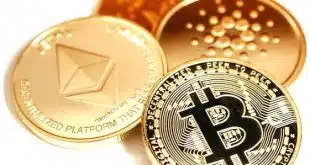Apple Pay, Android Pay, and Samsung Pay aren’t products, they’re platforms. And that means they’re well set up to succeed, says Thad Peterson.
With distribution of the needed functionality increasing on both the merchant and the consumer side, trial and usage will increase steadily over the next few years.
The wallet frenzy continues with the new operating-system entry, Android Pay, the new device entry, Samsung Pay, and a couple of new bank wallet entries, Capital One and Royal Bank of Canada, announcing since October. Add to that the semi-open (or is it semi-closed?) entry of JPMorgan Chase’s Chase Pay and its support of the merchants’ MCX/CurrentC wallet, and it would appear that 2016 is going to be a really interesting year for the payments space.
And just last month, Apple potentially added more complexity when it was reported that it may be developing a person-to-person payment capability.
With all this activity by players that haven’t really been seen to be part of the payments ecosystem, the question I hear at least weekly is: “Is Apple/Google/Samsung/(Insert brand here) going to develop its own payment capability and compete directly with the networks/banks?”
Given the amount of buzz around these offerings, it’s probably inevitable that this question should arise, and it’s possible that Apple etc. have that intent. But if these initiatives are reviewed objectively, that’s not the most likely path. Here’s why.
The Path to Glory
Aside from the basic supposition that payments, though potentially quite profitable, are not Apple’s or Google’s or Samsung’s core business (which might be sufficient to stop the argument), it’s important to understand what it is that they’re offering to the marketplace.
Apple Pay, for example, isn’t a product like an iPhone. It’s a container that holds information provided by other organizations—banks, retailers, payments networks, etc.—that adds value to the Apple device by enabling commerce functionality in both the physical and online worlds. In other words, it’s a platform that brings customers and retailers together using a mobile device.
That mobile device is becoming increasingly useful and complex as new applications and capabilities are added and more bandwidth becomes available. It’s fairly safe to say that the smart phone is pretty much indispensable. And since more and more of us have one around the world, it is quickly becoming the core technology for our species.
If you work for Apple, or Google, or Samsung, or Huawei, or Xiaomi, the path to glory is through providing your hardware, software, or both, to as many people as possible so that they choose to use your device and buy a new one every couple of years. Anything that can be done to efficiently add value is therefore a good thing.
The beauty of the mobile wallet for these players is that it adds a great deal of real and perceived value by leveraging products and services provided by companies that are really good at what they do. The capital expense to develop and manage Apple Pay at Apple is a pittance compared with the amount of investment that has gone into the payment ecosystem that it enables. Big win for Apple. Lots of value, not a lot of cost.
If Apple or the others decided to develop their own payment product, they would spend a lot of money that could be better spent making enhancements to their core products or adding additional capabilities. They would also potentially alienate the vastly complex and capital-intensive infrastructure that is the payment space. The wallet players have much more to gain providing a tool that lets other entities add value to their wallet and ultimately their core products.
The bigger opportunity for Apple and the others is to increase acceptance of their wallet transactions across the mobile and online ecosystem. This increases the value of the offering and potentially creates revenue opportunities for the wallet provider, again without a significant investment in product or infrastructure.
There’s an interesting parallel in the physical world. Coach makes wonderful leather wallets that make it easy to store payment and loyalty cards along with a lot of other stuff. Would Coach benefit if it chose to offer a payment product to replace the cards already in the wallet? Of course not. It’s in the wallet business. So too are Apple and the others.
The Other Question
So that leaves the other question that I’m asked weekly: “Why isn’t Apple Pay/Android Pay/Samsung Pay taking off? Looks like a failure.” There are a lot of reasons why mobile proximity payments are growing fairly slowly. Not the least of these is that the entire category has existed for only a little more than a year, and Android Pay and Samsung Pay have been out for less than three months. The consumer side of the platform is only now starting to reach a sufficient level of distribution to achieve critical mass. It will be two full years before it can be assumed that every smart phone is capable of near-field communication (NFC).
Beyond that, NFC terminal penetration is still low due to the fact that NFC wasn’t really the de facto standard for mobile proximity payments until Apple Pay was announced a little more than a year ago. And merchants have been focused on getting EMV terminals in place. NFC mobile is a secondary priority.
Now that merchants are replacing their old mag-stripe terminals with EMV/NFC-capable terminals, the distribution of NFC capability will go up dramatically. With distribution of the needed functionality increasing on both the merchant and the consumer sides, trial and usage will increase steadily.
The mobile wallet is a platform that enables commerce, a value-added capability that increases the “stickiness” of smart phones, and a tool that enhances consumers’ ability to interact with merchants in both the online and physical worlds. Because of the value that the platform provides all the constituents in the ecosystem, its eventual success is inevitable.
—Thad Peterson is a senior analyst at Aite Group, Boston. Reach him at tpeterson@aitegroup.com.




